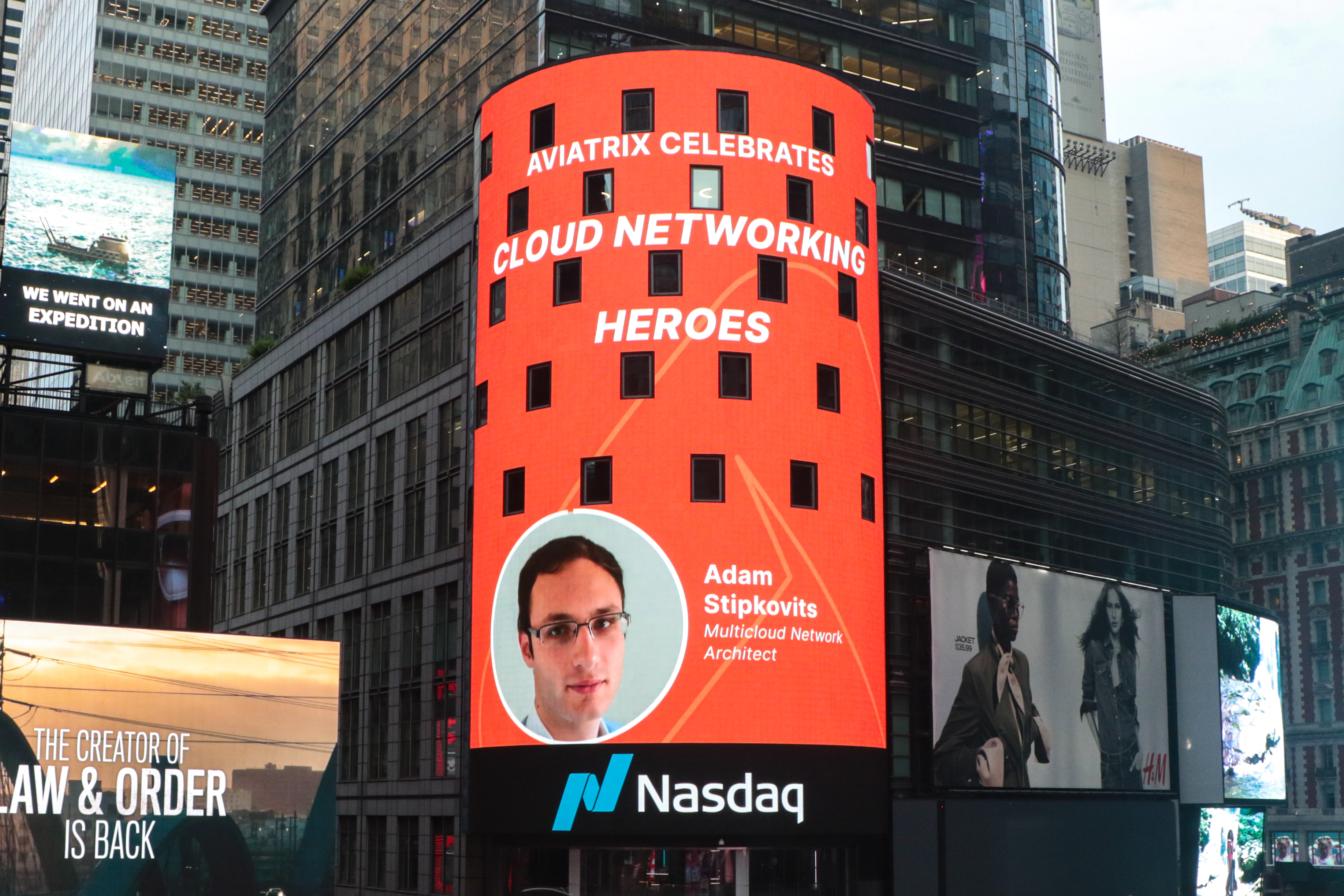
As the cloud networking experts, Aviatrix wants to elevate the work of cloud networking heroes who labor to keep networks secure, effective, and performant. We’re proud to highlight people who have taught themselves the necessary skills, designed and managed successful networks, and have the expertise to share, including several who joined Aviatrix in New York at the NASDAQ tower.
Our second hero spotlight is on Adam Stipkovits, Multicloud Network Architect. See our first hero spotlight on Toby Foss here.
The Beginning: A Rogue DHCP
Adam’s networking journey began with intense curiosity: he was fascinated by computers and played with his father’s whenever he got the chance. When he became a teenager, he got his own computer and started playing around with the programming language BASIC.
At 16, he had a lightbulb moment:
“One of my parent’s friends had a small IT company and he invited me to their office for a day,” he said. “He showed me a simple router which we connected to the company’s network to play around with. Two hours later, a furious sysadmin came to the room telling us that we were running a rogue DHCP server on the network and it took down connectivity for many clients.”
That day, Adam went home and started tinkering with port forwarding and dynamic DNS. He knew then he wanted to work with networks. After earning his degree, he got a position with the country’s biggest ISP as a network engineer. Since then, he continued experimenting with new tech and eventually became a network architect at Citibank, one of the top banks in the US.
About four years ago, Adam made the jump to cloud networking with the rest of the industry and eventually his current role as the cloud network architect of a big manufacturing enterprise with a global cloud network across multiple clouds.
“It is a privilege to shape, rearchitect, and automate such a complex, global cloud network,” he said.
The Network is the Cloud: Connectivity is Critical
Adam sees “the network is the cloud” as a call to action. He identifies three super-important infrastructure services: computing, storage, and networking. None of these services can work without the others. If applications cannot connect securely to each other or to end users, they are worthless.
Though network connectivity is absolutely critical, many people take networks for granted and discount the massive role of good design. The misconception that networking is easy leads many to rely on CSP default settings and services for things like visibility, creating networks that fail to provide the mission-control performance, connectivity, and security that keep the tech world going.
“We must never forget that we have a shared responsibility with the CSP in making sure that our networks are secure and perform as expected in the cloud,” said Adam.
The Evolution of Networking
Adam’s decades of experimentation and continuous improvement with network designs have given him an in-depth knowledge of how they look under the hood. He named crucial industry trends he’s observed, including:
- Automation – Adam believes that the massive industry shift to the cloud has significantly accelerated the transition to automation. When people realized that the console was not the only way to configure networks, they wanted a similar experience everywhere. Now, large vendors deliver highly automated network fabrics with “nice UIs and APIs,” and most users can avoid using the actual console when interacting with these fabrics.
- Overlay – “We are living in the age of overlays . . . ones inspired by virtualization and the cloud. I believe this was also made possible by hiding the complexity of these overlay solutions with a higher level of automation.”
The Greatest Challenge: Complexity
Adam’s incredible attention to detail helps him face the most critical challenge of his current role: the complexity of the networks running today. As a cloud network architect, he’s not only responsible for a network that spans multiple geographies and cloud providers, but also how users can securely access cloud applications.
“Since most network issues happen when users are accessing an application from their locations, when designing cloud networks I need to understand the network of office locations, the WAN and the network used by remote workers,” he said.
He’s found this complexity also creates a visibility and troubleshooting nightmare. Often, network visibility and troubleshooting tools don’t easily interact with each other, frustrating networking teams who need to resolve issues across multiple network domains.
Looking Forward
When considering the future of cloud networking, Adam hopes to see drastic improvements in three areas:
- Better network integration across the different CSPs and on-premises networks
- Security that is more integrated into cloud networks instead of centralized, bolt-on solutions, as well as more secure default settings for cloud networking
- Streamlined troubleshooting tools
He also spoke to the rise of AI: “I believe cloud networking (and networking in general) will benefit from AIOps in the next 10 years, but it will take significant time and investment to find the right use-cases for it as networks have grown more diverse than ever before.”
A Path Not Taken
We asked what career Adam would pursue if not cloud networking. He named another career path ideal for someone who enjoys experimenting with and exploring complex designs: “I’m really interested in understanding the details of how cars work,” he said. “While this is still close to tech, I’d probably be a mechanic or more likely an automotive electrical technician.”
Curious about other cloud networking heroes like Adam?
- We’ll keep highlighting networking professionals on this blog.
- Learn more about the Cloud Networking Heroes program and apply on the The Cloud Network Community.
To hear more about Adam’s work, listen to his interview on the Aviatrix Altitude podcast here.

